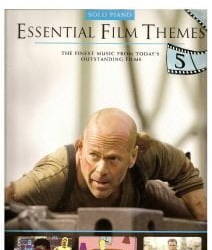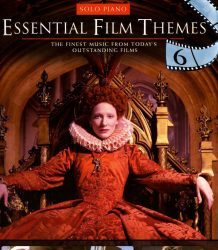#Philip Mansel
Explore tagged Tumblr posts
Text

Adding Alexander knew the layout of Napoleon’s place by heart because he checked the updated floor plans every month for 4 years to the Napalex lore
Source: Philip Mansel, The Court of France: 1789-1830, p. 148
#Alexander was the kind of man who blurred the lines between committed lover and dedicated enemy#and really#what more could you ask for from Napoleon’s antagonist?#Philip Mansel#The Court of France#Napoleon#Tsar Alexander I#napoleonic era#napalex#Tuileries
108 notes
·
View notes
Text
Philip Mansel – Levant (2024)
Büyük tarihçi Philip Mansel’in Levantenlik mefhumuna ve pratiğine hasrettiği ‘Levant’ta bir zamanların büyük liman kentleri, zevküsefa, özgürlük ve refahın payitahtları olarak boy göstermiş üç şehrin hikâyesini okuyoruz: Smyrna, İskenderiye ve Beyrut. Bu inşayı gerçekleştirebilmek için pek çok coğrafya, tarih ve kültürle hemhal olan ve sayısız kaynağa başvuran Mansel, dini olanla siyasi olanı…

View On WordPress
0 notes
Text

As part of Kronos: Five Decades, the year-long celebration of Kronos Quartet’s 50th anniversary, the group is publishing five decade-spanning playlists curated by its founder and violinist David Harrington. The latest, featuring music Kronos performed in its third decade, 1993–2002, is out now. and can be heard here.
The playlist includes works by R.D. Burman, Alfred Schnittke, Henryk Górecki, Clint Mansell, Tan Dun, Osvaldo Golijov, John Cage, Hildegard von Bingen, Philip Glass, Steve Reich, Carlos Paredes, Scott Johnson, Esquivel, Café Tacvba, Sofia Gubaidulina, Franghiz Ali-Zadeh, Morton Feldman, and more.
#kronos quartet#alfred schnittke#henryk gorecki#clint mansell#tan dun#osvaldo golijov#john cage#philip glass#steve reich#nonesuch#nonesuch records
0 notes
Text
Reading Levant by Philip Mansel, this is a fascinating little glimpse into the Age of Sail from the Middle Eastern perspective:
It was said that God had given the land to Muslims, the sea to the infidels. Some feared that ‘before very long’ Europeans would use their control of the high seas to ‘rule the lands of Islam’.
Now the thing is that they were very much right about all of that. That did kind of happen.
16 notes
·
View notes
Text
As you all know, I have been taking a small break from AYCF to start working on my original novel. What is this novel you may ask?
Well, over the course of about seven months, and thanks to my friends and my brain. These two have become near and dear to me. Richard Bastion and Frederick Mansell have gotten so much lore and character development. I decided to turn their backstory into a full original novel called "An Ember in the Twilight" starting from when they meet until Fredericks death.
I realized I could entirely remove Caleb, Philip, and anything related to TOH from the story and still have certain events happen without their presence. ( I already solved those plot holes.) I have always wanted to write an original novel, and since I already have a strong connection to Frederick and Richard's story and them as characters, these two were the perfect subject for it ^_^
I'm also trying my hand writing the first person, switching between Richard's and Frederick's POV.
In the meantime, please enjoy this wholesome art of Frederick and Richard as kids( back when they were best friends before the tragedy). I commissioned from my friend the one and only @bananadramaaa

As an added bonus, here is a small snippet as well.

#art commision#original characters#these two are living rent free in my brain#i cant with them#love my tragic gay puritans#these two will be the death of me
9 notes
·
View notes
Text
The Bishop in the Presence of an Unknown Timeline
David Montgomery, illustrious creator of The Siecle (gooooo go listen to it, read the transcripts, it's SO good) , today laid out the necessary historical timeline for the Bishop's visit to the Conventionist! I am copying that over here with permission:
Alright, I have consulted my sources and have interesting findings about the chronology of the Myriel chapters. Chapter X includes the following lines, reflecting popular comments about the Conventionist in town: He was a quasi-regicide. He had been a terrible man. How did it happen that such a man had not been brought before a provost’s court, on the return of the legitimate princes? ... As he had not voted for the death of the king, he had not been included in the decrees of exile, and had been able to remain in France. This references two things: the "provost's court" and the "decrees of exile." Both are real historical things, and both can be dated fairly precisely. The "decrees of exile" could refer to several different things. Promptly upon Louis XVIII's return after Waterloo, he issued a July 24, 1815 blanket amnesty for crimes committed during the Hundred Days — but exempted 56 Bonapartists from pardon. Most were allowed to (encouraged to, even) slip out of the country, where they had to remain for fear of prosecution for treason. But I think this most likely refers to another law, passed on January 12, 1816. This Amnesty Law (subject of fierce negotiations between the ministry and parliament, related mostly to whether it infringed on the king's prerogative of pardon and his July 24 amnesty decree) ultimately exiled the hard-core Bonapartists targeted by the July 24 decree, and also all Regicides who had sided with Napoleon during the Hundred Days. (Regicides who had stayed loyal were not banished.) Provost Courts were special tribunals where military provosts acted as accuser and prosecutor before a panel of civilian judges. Their was no jury, no appeal, and judgment (including death) was carried out within 24 hours. These had existed under Napoleon, but were abolished in 1814 at the First Restoration. Article 63 of Louis XVIII's "Charter of 1814" reads: "...extraordinary commissions and tribunals cannot be created. Provost-courts are not included under this denomination, if their re-establishment is deemed necessary." After Waterloo, the Provost Courts were re-created to deal with political criminals — seditious meetings, rebellion, and threats against the government and royal family. Crucially, however, the Provost Courts were re-established by a law of December 27, 1815. Given the textual references, if one assumes a realistic timeline and no authorial error, then Chapter X could not have taken place before January 1816, and likely (given that the exile decrees and provost courts are discussed in the past and not present tense) at least some time after that date. Sources: Mansel, Philip. Louis XVIII. Rev. ed. Phoenix Mill: Sutton, 1999. Sauvigny, Guillaume de Bertier de. The Bourbon Restoration. Translated by Lynn M. Case. Philadelphia: The University of Pennsylvania Press, 1966. The Charter of 1814: https://en.wikisource.org/wiki/French_Constitutional_Charter_of_1814
#Les Mis Letters#LM 1.1.10#The Conventionist#!!!#Myriel#David Montgomery#long post#I have tried to Repair formatting but tumblr only allows so much ><
34 notes
·
View notes
Text

(From Philip Mansel’s Eagle in Splendour).
I’m sorry, but the last line is so bleeping funny
6 notes
·
View notes
Text
Essential Film Themes Vol. 1 to 6
Best Sheet Music download from our Library.Essential Film Themes Vol. 1 (Piano Solo sheet music)Please, subscribe to our Library. Thank you!Essential Film Themes vol 2Essential film themes vol 3Essential film Themes vol 4Essential film themes vol 5Essential Film Themes vol 6Search sheet music in the Library:Film Themes for Piano - 20 Beautiful Movie Favorites This collection offers a great collection of modern day movie themes.
Essential Film Themes Vol. 1 (Piano Solo sheet music)

Contents: - American Beauty- American Beauty - Angela Undress - Emma- The Wedding - End Titles - The English Patient (Der Englische Patient) - The English Patient - A Retreat - Rupert Bear - Forrest Gump - Feather Theme - Ghost - Ghost - Gladiator- Honor Him - Now We Are Free - Il Postino- Il Postino - The Bicycle - The Last Of The Mohicans (Der Letzte Mohikaner) - The Last Of The Mohicans - Little Women (Betty Und Ihre Schwestern) - Under The Umbrella - Pleasantville- The Pleasantville Theme - Real Rain - The Piano- The Heart Asks Pleasure First (The Promise / The Sacrifice) - Lost And Found - The Remains Of The Day (Was Vom Tage Uebrig Blieb) - Darlington Hall - Saving Private Ryan (Der Soldat James Ryan) - Hymn To The Fallen - Shakespeare In Love- The Beginning Of The Partnership - Viola's Audition - The Truman Show - It's A Life
Essential Film Themes vol 2

Contents: Ada And Inman (Cold Mountain) Ada Plays (Cold Mountain) After Midnight (Chicago) Alicia Vive (Talk To Her) Alone In Kyoto (Lost In Translation) Anthem (Cold Mountain) Autumn In Connecticut (Far From Heaven) Cautionary Tale (Confessions Of A Dangerous Mind) Dead Things (The Hours) Did You Know Him? (Donnie Darko) End Credits (About Schmidt) Glasgow Love Theme (Love Actually) I Love N.Y.E (About A Boy) Jenny's Theme (Big Fish) Le Moulin (Amelie) Liquid Spear Waltz (Donnie Darko) Missing Helen (About Schmidt) One More Hour (Calendar Girls) Pandora's Box (Lara Croft Tomb Raider: The Cradle Of Life) Perdition (Road To Perdition) Portugese Love Theme (Love Actually) Reprise (Spirited Away) Reprise And End Credits (Catch Me If You Can) Road To Perdition (Road To Perdition) Rosie Darko (Donnie Darko) Seabiscuit (Seabiscuit) Self-portrait With Hair Down (Frida) Still Life (Frida) The Artifact And Living (Donnie Darko) The Floating Bed (Frida) The Press (Calendar Girls) The Quiet American: Piano Solo (The Quiet American) Underwater (Big Fish) What I Really Want To Say (About Schmidt) Will And Elizabeth (Pirates Of The Caribbean: The Curse Of The Black Pearl) You Fascinate Me (Intolerable Cruelty)
Essential film themes vol 3

Contents: Brokeback Mountain Cinderella Man Finding Neverland I Love Huckabees King Kong Memoirs Of A Geisha Mrs Henderson Presents Munich Oliver Twist Pride And Prejudice Proof The Chronicles Of Narnia: The Lion, The Witch And The Wardrobe The Constant Gardener
Essential film Themes vol 4

Contents: Babel (Santoalalla, Gustavo) Black Book (Dudley, Anne) Breaking And Entering (Yared, Gabriel) (Underworld) Charlotte’s Web (Elfman, Danny) Flags Of Our Fathers (Eastwood, Clint) Freedom Writers (Isham, Mark) Infamous (Portman, Rachel) Little Miss Sunshine (Danna, Mychael) Marie Antoinette (O’halloran, Dustin) Miss Potter (Westlake, Nigel) Notes On A Scandal (Glass, Philip) Pan’s Labyrinth (Navarette, Javier) Perfume (Tykwer, Tom) (Klimek, Johnny) (Heil, Reinhold) The Devil Wears Prada (Shapiro, Theodore) The Fountain (Mansell, Clint) The Holiday (Zimmer, Hans) The Last King Of Scotland (Heffes, Alex) The Queen (Desplat, Alexandre) The Science Of Sleep (Bernard, Jean-michel) Volver (Iglesias, Alberto) World Trade Center (Armstrong, Craig)
Essential film themes vol 5

Contents: - Love Letters - First Impressions - Selbourne Wood - Lady Gresham - Runaways - An Adoring Heart - Snow Cones - Tangiers - Vesper - The City Of Lovers - The Name's Bond James Bond - Sally And Jack - Live Free Or Die Hard - Silver Surfer Theme - Edward - Edward's Secret - Paolo E Bruno - Mirror - Stewart And Claire - The Humming Way
Essential Film Themes vol 6

Contents: 13.10 to Yuma-Beltrami Marco21408-Gabriel Yared3American Gangster-Marc Streitenfeld4Atonement-Marianelli Dario5Be Kind Rewind-Williams Spencer6Charlie Wilson's War7Closing the Ring-Danna Jeff8Eastern Promises-Shore Howard9Elizabeth:The Golden Age-Armstrong Vraig10Evan Almighty-Debney John11Evening-Kaczmarek Jan A.12Love In The Time Of Cholera-Pinto Antonio13Lust Caution-Desplat Alexandre14My Blueberry Nights-Santaolalla Gustavo15The Other Boleyn Girl-Cantelon Paul16Perfume-Tykwer Tom,Klimek Johnny & Reinhold Heil17Ratatouille-Giachinno Michael18River Queen-Jenkins Karl19Stardust-Eshkeri Ilan20Youth Without Youth-Osvaldo Golijov & Arturo Castro
Search sheet music in the Library:
Film Themes for Piano - 20 Beautiful Movie Favorites
https://www.youtube.com/watch?v=8iDtB5yxonw Track List: Film Themes for Piano - 20 Beautiful Movie Favourites 00:00:00 Michael Nyman: The Heart Asks Pleasure First (From "The Piano") 00:02:40 John Williams: Main Theme (From "Schindler's List") 00:05:35 Yiruma: River Flows in You 00:08:29 Joe Hisaishi: One Summer's Day (From "Spirited Away") 00:11:39 Hans Zimmer: Time (From "Inception") 00:15:47 Ennio Morricone: Gabriel's Oboe (From "Mission") 00:18:45 Johann Pachelbel: Canon in D Major (Main Theme from "Ordinary People") 00:21:35 Ludovico Einaudi: Una mattina (From "Intouchable") 00:24:53 Rachel Portman: Main Theme (From "Chocolat") 00:27:38 Yann Tiersen: Comptine d'un autre été, l'après-midi (From "Amélie") 00:30:10 Samuel Barber: Adagio for Strings, Op. 11 (from "Platoon") 00:34:53 Claude Debussy: Suite Bergamasque, L. 75: III. Clair de lune (From "Casino Royale") 00:39:28 Ennio Morricone: Main Theme (From "Cinema Paradiso") 00:42:01 Felix Mendelssohn: Songs Without Words, Op. 30, No. 1 (From "Sophie's Choice") 00:46:30 Ryuichi Sakamoto: Main Theme (From "Merry Christmas, Mr. Lawrence") 00:51:07 Ludovico Einaudi: Le onde 00:55:34 Dave Grusin: Main Theme (From "On Golden Pond") 00:59:11 Gabriel Yared: Main Theme (From "The English Patient") 01:01:15 Gustav Mahler: Symphony No. 5: IV. Adagietto (Arr. for Piano) 01:05:02 Philip Glass: The Poet Acts (From "The Hours") Read the full article
#SMLPDF#noten#partitura#sheetmusicdownload#sheetmusicscoredownloadpartiturapartitionspartitinoten楽譜망할음악но��ы
0 notes
Link
[ad_1] İzmir Büyükşehir Belediyesi ve İzmir Levantenler Derneği, ünlü İngiliz tarihçi Philip Mansel’i İzmirlilerle buluşturdu. İzmir Sanat Merkezi’nde “Liman Kenti İzmir-Bir Levantenler Hikâyesi” adıyla düzenlenen söyleşiye İzmir Büyükşehir Belediye Başkanı Tunç Soyer, Almanya Başkonsolosu Ralf Schröer, İtalya Konsolosu Valerio Giorgio, Levantenler Derneği Genel Sekreteri Alp Sönmezışık, İzmir Levantenler Derneği Başkanı Giuliano Gloghini, Arkas Holding Yönetim Kurulu Başkanı Lucien Arkas ve çok sayıda İzmirli katıldı.Levant, Konstantiniyye, Sultanların İhtişamı ve Halep adlı eserleri Türkçe olarak yayımlanmış olan Philip Mansel, 8 bin 500 yıllık geçmişe sahip tarihi liman kenti İzmir’i “Bir Levantenler Hikâyesi” bağlamında ele aldı."KÜLTÜRLER VE TİCARET İZMİR’DE KESİŞİR"İzmir’in ticari, kültürel tarihinden örnekler veren Philip Mansel ise kentin dünyada ve Akdeniz’deki konumunun önemine değindi. “Levant kitabım için buraya geldiğimden ve yaptığım araştırmalardan beri İzmir aşığı oldum” diyen Mansel 1800’lü yıllar üzerinden, “İzmir dünya çapında çok önemli bir ticari merkezdi. Hong Kong ya da Şanghay gibi Çin’deki limanlara benziyordu. O dönemde İzmir’e ticaretin gözü diyorlardı. En önemli limanlardan bir tanesiydi. Asya’dan tüccarlar buraya alışveriş ve ticaret için geliyorlardı. Avrupa’dan da buraya geliyorlardı. Kültürlerin ve ticaretin kesiştiği yer İzmir’di” değerlendirmesini yaptı.“UNESCO VE DÜNYA İZMİR MİRASINA DAHA FAZLA İLGİ GÖSTERECEKTİR”Programda konuşan İzmir Büyükşehir Belediye Başkanı Tunç Soyer ise İzmir’in Levant bölgesinde bir şehir olduğunu belirterek, “ İzmir 8 bin 500 yıldır kesintisiz insan yerleşimine sahip bir Akdeniz liman kentidir. İzmir ve Levant’ın diğer liman kentleri bu tarihsel kültür akışının gerçekleştiği çok önemli yerlerdir. İzmir günümüzün düşünce dünyasını tasarlayan çok değerli düşünürlerin ve filozofların evidir. Bu bölgede demokrasi gibi toplumsal yenilikler ortaya çıkmıştır. Levant bölgesindeki diğer şehirler gibi İzmir de farklı kültürlerin, dinlerin ve milletlerin barış içinde bir arada yaşayabildiği bir yer olmuştur. İzmir’in canlı ve çok kültürlü bir liman kenti olarak rolü kendine özgü coğrafi konumu ve farklı kültürlerin ve ticaret yollarının kesişmesiyle derinden şekillenmektedir. Bu özelliği tarihi liman kenti İzmir’in UNESCO Dünya Mirası Geçici Listesi’ne girmesiyle tescillenmiştir. İzmir bir bütün olarak insanlık için yaşayan bir mirastır. UNESCO’nun ve küresel toplumun insanlığın ortak kültürel hazinesi olan dünyanın İzmir mirasına yakın zamanda daha fazla ilgi göstereceğini yürekten umuyorum” dedi.MANSEL’E TEŞEKKÜRÜnlü tarihçi Mansel’e özverisi, destekleri ve ortak insanlık mirasının dokusunu korumaya yönelik kalıcı bağlılığı için teşekkür eden Soyer, “Çalışmalarınız tarihin koridorlarını aydınlattı ve hayatımızı sayısız şekilde zenginleştirdi. İzmir medeniyet güneşinin hiç batmadığı, kültür dalgalarının daim olduğu bir insanlık deneyimidir. İnsanlığın ve dünyamızın refahı için bu mirası korumak amacıyla samimiyetle buradayız” diye konuştu. “BU ŞEHRE AŞIĞIZ”İzmir Levantenler Derneği Başkanı Giuliano Gloghini de, “Biz Levantenler İzmir aşığı insanlarız. Bunu her seferinde vurguluyorum. Bu şehre aşığız. Biz nereye gidersek gelelim, bu şehre yıllar sonra kalbimiz atarak dönüyoruz” dedi.PHİLİP MANSEL KİMDİR?Fransa ve Osmanlı İmparatorluğu tarihi hakkında çok sayıda kitabın yazarı olan Philip Mansel, 1951'de Londra'da doğdu. Doğu Akdeniz'in tarihi ve kültürlerinin araştırılmasına kendini adamış bir hayır kurumu olan Levanten Miras Vakfı'nın da mütevelli heyeti üyesi olan Mansel, aralarında Amerika Birleşik Devletleri, Fransa, Almanya, İtalya ve Türkiye'nin de bulunduğu pek çok ülkede konferanslar verdi. İki bölümlük Channel 4 belgeseli "Harem" ve iki BBC 2 belgeseli de dahil olmak üzere radyo ve televizyonda çok sayıda programa katıldı.Kraliyet Tarih Derneği, Kraliyet Edebiyat Topluluğu, Tarihsel Araştırma Enstitüsü (Londra Üniversitesi) ve Kraliyet Asya Topluluğu üyesi olan Philip Mansel, Fransa Kültür Bakanlığı’nın Sanat ve Edebiyat Şövalyelik Nişanı sahibi. 2012'de Londra Kütüphanesi Edebiyatta Yaşam Ödülü'nü aldı ve 2016'da Belçika'da Kraliyet Nişanı'na layık görüldü. Kitapları Fransızca, Almanca, Felemenkçe, İtalyanca, İspanyolca, Rusça, Yunanca, Arnavutça, Türkçe, Arapça ve Çinceye çevrildi. [ad_2]
0 notes
Text
The Story of Christian Louboutin’s Red Sole
DATE: 07/15/2022
What if I told you that the story of Christian Louboutin’s red sole started with…nail polish? With simple beginnings in 1991, Louboutin was about to launch a trademark look for the fashion industry, and it came from simple inspiration—and a little luck. Here’s the story behind Louboutin’s red sole, plus a few more reasons to love his heels as much as I do!
What inspired the red heel?
Tell the truth: when you catch a flash of Christian Louboutin’s trademark red sole while, say, out for a walk, what images pop into your head? Luxury? Royalty? Riches? Well it makes sense, since red heels have quite the royal history, dating back to French monarchy and in particular, King Louis XIV.
As the story goes, Louis’ younger brother Philippe d’Orléans – who for some reason was raised as a girl – was out walking the streets of Paris when his heels became stained with a red color. Attracted as he was to the look, he went home and is said to have painted all his heels red, only for his older brother to adopt the style himself.
Soon, the red heel would gain a permanent place in history thanks to Louis’ own narcissism, which saw him pass an edict that meant only nobility could wear heels, and only allowed those in his favor to wear red heels at that—apparently, the higher the heel, the more favored the wearer.
In fact, according to Philip Mansel – a historian with knowledge on the subject – the color red “demonstrate[d] that the nobles did not dirty their shoes”, and impressed upon the lower classes the idea that noble-persons “were always ready to crush the enemies of the State at their feet.”
Not that it lasted—soon the style fell out of fashion with the French Revolution and Marie Antoinette’s beheading, where she has been recorded as wearing a pair 2-inch heels to the guillotine.
While red heels had become unpopular for some time afterward – so much so that the phrase “red-heeled” was for a while considered derogatory in the UK – we know now that this ‘royal’ and dramatic history has nothing to do with how Christian Louboutin came to build his brand identity around the eye-popping red sole we know today!
Red Soles and Nail Polish
In 1993, after being in business for two years, it is said that Christian Louboutin released his latest collection of shoes a few weeks late. The idea had been to create a shoe inspired by close acquaintance (and party buddy) Andy Warhol’s painting, Flowers—and yet when the prototype arrived from Italy, there was something missing.
Certainly, the pink-stacked heel and large cloth blossom looked like the design Louboutin had drawn, and yet according to the designer, “the drawing was still stronger and I could not understand why.”
Enter, the red sole of fate! Looking around for inspiration, the blank, black sole of the shoe staring at him in the face, Louboutin noticed an assistant in his office painting her fingernails red. Without asking – so we can assume – Louboutin grabbed the bottle of red varnish, polished the sole of one of the shoes and thought: “This is the drawing!”
So were Louboutin’s red soles born!
When, in the years since, Christian has been asked about the importance of the red sole, he has been quoted as saying, “The shiny red color of the soles has no function other than to identify to the public that they are mine. I selected the color because it is engaging, flirtatious, memorable, and the color of passion.”
Louboutin is certainly known to be passionate about his red soles, which he registered in 1997 with the U.S. Patent and Trademark Office—a move that would later come in handy in a court case against Yves St. Laurent when the design house delivered a collection featuring their own version of Louboutin’s red soles.
Thanks to the existing popularity of the heel, and because of the drama which ensued when YSL was accused of copying Louboutin’s signature, today Louboutin’s red soles are as iconic to his brand as Chanel’s interlocking C’s—and only come in one shade: Pantone 18-1663 TPX.

0 notes
Text
A bit more about Bernadotte, a tiny little crumb about Mortier
Just about a year ago, just before Bernadotte's birthday, I kept coming across new discoveries regarding the previous birthday boy, Ney. Well, discoveries new to me, anyway.
This year, coming up on Mortier's birthday, I keep coming across new discoveries regarding the previous birthday boy, Bernadotte. This latest one is from "Journal du comte Rodolphe Apponyi, attaché de l'ambassade d'Autriche-Hongrie à Paris", to be found on Gallica. Silly me, I forgot to note the page but it's round about page 15, and it's for the year 1844. It is shortish, so I will transcribe the extract in its entirety, followed by my own rough translation:
"Le roi de Suède est toujours mourant. Il a été si mal, ces derniers temps, que malgré sa défense expresse de ne jamais le saigner, de le laisser mourir plutôt que de faire cette opération, on l'a fait par ordre exprès de la reine, mais quel ne fut pas l'etonnement des assistants, en voyant sur ce bras royal quantité de tatouages cabalistiques et surtout, du haut en bas la phrase suivante en grosses lettres: "Liberté. Égalité. Vive la République!"
On m'a raconté, à ce propos, que lorsque Bernadotte a été en Corse, il a voulu épouser la fille d'un fermier parce qu'elle avait quelque argent; les parents de la jeune fille ne la lui ont pas accordée parce que lui n'en avait point et qu'il n'était que simple soldat. Cette femme vit encore: elle est si pauvre qu'elle est servante dans une petite maison bourgeoise où elle porte de l'eau et fait le gros ouvrage dans la cuisine!"
The King of Sweden is Bernadotte, of course. He did die in 1844, after spending 34 years successfully ruling Sweden, unofficially as the Crown Prince since 1810, then as the actual King from 1818.
Here is my translation of the preceding French text:
"The King of Sweden is still near death. He has been so ill of late that in spite of his formal command never to bleed him, to let him die rather than to carry out this procedure, the Queen ordered it to be done; but the medical assistants were astonished to see on the royal arm a multitude of cabalistic tattoos but especially, from top to bottom, the following phrase in large lettering: "Liberty. Equality. Long live the Republic!"
I have been told that when Bernadotte was stationed in Corsica, he had wanted to marry the daughter of a farmer because she had some money; her parents refused to grant his request, because he had no money of his own and because he was but a soldier. The woman in question is still alive: she is so poor that she is now a servant in a small bourgeois household, where she fetches water and works as a scullery maid."
Bernadotte did serve in Corsica before the Révolution. At the time, Corsica had not been part of France for very long and the political situation there was not terribly stable. I have not looked into this, but I wonder if he and Napoleon might have been there at the same time in the 1780s. I wonder too if Bernadotte knew about the Bonaparte family at least by reputation, as it had at least some degree of prominence on the island, and certainly much prominence in Ajaccio.
Regarding Bernadotte's tattoos, I have seen different versions of what the exact wording was - "Death to Kings" is what I have read elsewhere - where this particular tattoo was located (arm? chest?), and the reason for Bernadotte's reticence. I think it makes more sense that he did not want to be bled than the reason I have seen elsewhere, namely that he was embarrassed that his doctor would see the tattoo. By the time he was at death's door, somehow I doubt he would have cared that much about his doctor's opinion about very old tattoos - including the cabalistic ones, which I think referred to freemasonry symbols.
Now on to the Mortier crumblet.
I am still reading Philip Mansel's "The Eagle in Splendour" with pleasure and interest. I do have a bone to pick with him, which is that he does not sufficiently quote his sources. This drives me nuts when I want to find out more about any particular aspect of his book. I have no idea where the following information comes from, and it does leave me wondering.
On page 59, Mansel writes, concerning Napoleon's marriage to Marie-Louise:
"Throughout the round of glittering ceremonies, the Emperor and Empress were surrounded by members of the imperial family and, above all, of the court. Duroc, Berthier, Montesquiou and Marshal Mortier were especially prominent (...)."
Huh? Why was Mortier especially prominent at the time of Napoleon's second wedding? Why he, among all the Marshals? No surprise about Berthier, who had been sent to Vienna to finalise the marriage agreement and who had actually married Marie-Louise by proxy; but Mortier? And in what role? This doesn't seem to be something I will find out from Mansel. Not cool.
#napoleon#empress marie louise#edouard mortier#jean baptiste bernadotte#napoleon's marshals#philip mansel#the eagle in splendour
24 notes
·
View notes
Quote
When Racine died, the King praised him so highly that other courtiers said they wished they could die too.
Philip Mansel, King of the World
#yes I almost typed King of the Hill#King of the World#Philip Mansel#extremely thorough and detailed book but if you have no background on the topic it's going to be hell#I honestly did not have a good time#also the author doesn't translate a lot of the French which I feel is bad writing if you're writing for an English-spaking audience#the sense of time and pacing was also really messed up he would jump forward by decades to connect events and also wouldn't always explain#connections he thought were obvious#spoiler alert: they were not all obvious#anyways#I kinda just want to read the Larry Gonick vers of this#if he ever even covered this?
1 note
·
View note
Text
Philip Mansel – Konstantinopolis (2023)
Osmanlı başkenti İstanbul’u hakkında geniş ve birincil kaynaklarla zenginleşen kapsamlı bir inceleme. Philip Mansel bu kadim şehrin ihtişamını da görkemli çöküşünü de çok iyi yansıtıyor. İmparatorluklar başkenti, kutsal şehir, Çeşm-i Cihan, Dersaadet… Her yakıştırmanın hakkını verebilen bu şehrin en özel hikâyesini Mansel’den dinliyoruz. Kitap İstanbul’un Ceneviz, Venedik, Rum, Ermeni, Arap,…

View On WordPress
#2023#Alfa Yayınları#Dünyanın Arzuladığı Şehir 1453-1924#Konstantinopolis#Philip Mansel#Şerif Erol#İstanbul
0 notes
Text
Books for August - a list of five
Books for August – a list of five

My brand consultant (yeah, I’m just like the pros, see?) tells me I should do what everybody else does, and post a list of suggested books for my readers to pack as they go on vacation. Make it a five points list, he said. People love five points lists. And who am I to ignore my brand consultant on such matters? So, here we go… a few books you might like to pick up for your summer reading, provided…
View On WordPress
0 notes
Text

This is based on a headcanon of mine for AYCF that Caleb wasn't allowed to mourn Mr. Mansell openly, and he tried not to around Philip as well. So he tries to constantly convince himself not to mourn him by repeating, "Don't mourn him." over and over again in his mind, and it doesn't work. (Also, he is wearing Mr. Mansell's hat)
Mr. Mansell's death affected Caleb a lot. I know I don't write much about it in AYCF, but his death was one of the most traumatic experiences for him, seeing as he considered Mr. Mansell, his honorary father. ( I do plan on writing a one-shot exploring this headcanon more in-depth.) Anyway, enjoy some Witteangst.
#caleb wittebane#the owl house#a young candles flame#angst#owl house#I kinda got a bit carried away#Caleb is 100% okay
18 notes
·
View notes
Video
tumblr
Happy Halloween! When darkness falls from a phantom thread of holy dread and primal anxiety, as dark angels and dead things descend and zombie boys, sinister kids, and ghosts come howlin' for you in the final hour of these strange times when nothing is taboo, may you find an epiphany—some strange asylum and eternal light in the dark matter of a new Nonesuch playlist, featuring music from Kronos Quartet, Clint Mansell, Jonny Greenwood, William Brittelle, Daniel Wohl, Laurie Anderson, John Adams, Philip Glass, Tigran Hamasyan, Jeremy Denk, Björk, The Black Keys, The Magnetic Fields, The Staves, Lianne La Havas, and more. Here it here ... if you dare!
#halloween#kronos quartet#clint mansell#jonny greenwood#there will be blood#william brittelle#daniel wohl#laurie anderson#john adams#philip glass#tigran hamasyan#jeremy denk#bjork#the black keys#the magnetic fields#the staves#lianne la havas#nonesuch#nonesuch records
0 notes